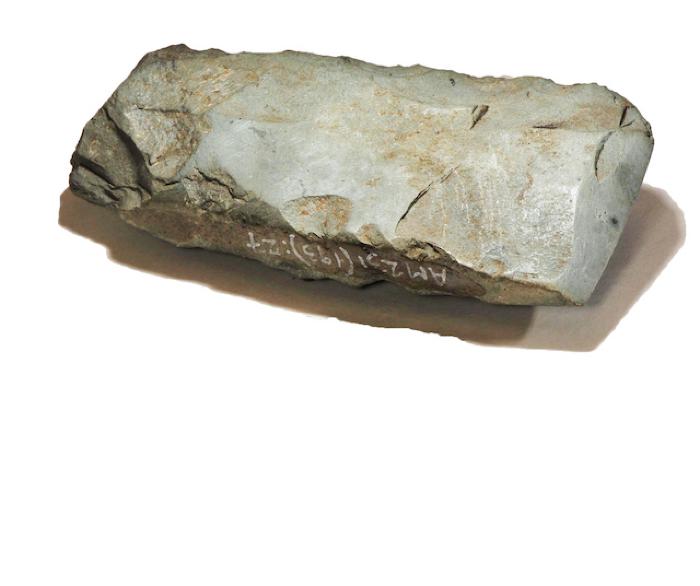Axe — TupuuRuq

Today, Alutiiq speakers refer to axes and adzes with the term tupuuRuq, a word derived from the Russian term for an axe. However, historic sources reveal that there were once distinct Alutiiq terms for different types of adzes. The verb cikllarluku means to split or chop something, and cikllaun is a splitting adze used to break apart logs. In contrast, cakillukumeans to carve or hew, and cakiun is a planing adze, used for shaping wood.
Whatever their functions, adzes are one of the most ancient and enduring pieces of Alutiiq technology. The very early residents of Kodiak chipped small adzes from local stone and ground the bits to a sharp edge. For thousands of years, the style and manufacture of these tools remained similar. Craftsmen even used the same materials—a pale greenstone and a blue green schist that outcrop along the west coast of the archipelago.
Over time, as people built houses to hold multiple families, constructed large community buildings, and crafted big open skin boats, the size, and variety of woodworking tools expanded. Adzes from the last 600 years of Alutiiq history match historically recorded terms. Craftsmen pecked greywacke beach cobbles into heavy cikllaun—splitting adzes, some about the size and shape of a shoe. From blocks of greenstone, they chipped and ground large cakiun planing adze blades useful for shaping planks and boat parts.
In the 18th century, Russian traders introduced large, durable iron axe heads, tupuuRuq, which eventually replaced traditional stone tools.
